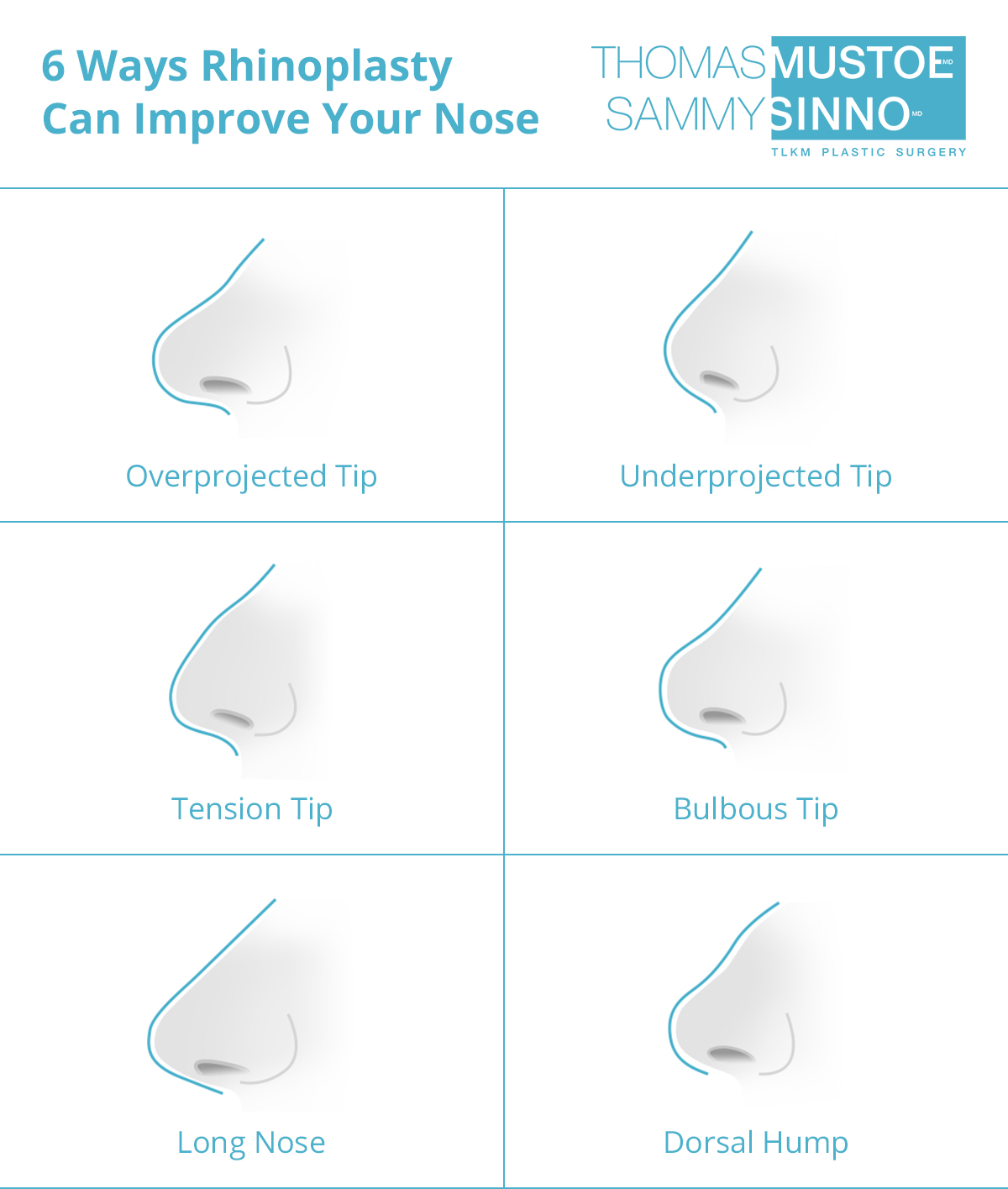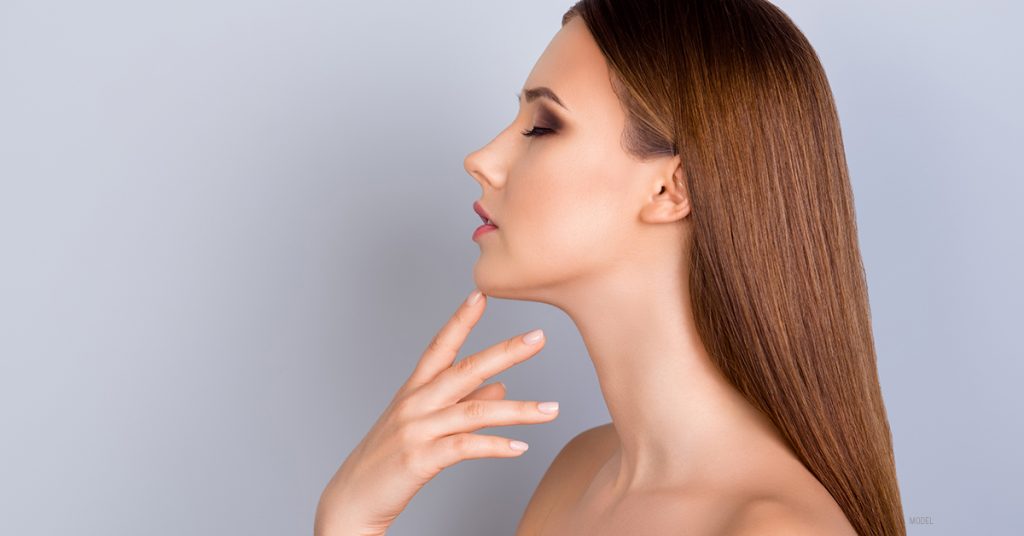Rhinoplasty is not a one-size-fits-all procedure. In fact, it is one of the most complicated and complex facial plastic surgeries. Even mere millimeters matter when reshaping this central facial feature, and creating exceptional results means finding a balance between correcting concerns and maintaining the aesthetic integrity of your unique look.
Board-certified plastic surgeons Dr. Thomas Mustoe and Dr. Sammy Sinno strike this balance on a near-daily basis when they perform rhinoplasty (or “nose job”) procedures at their Chicago plastic surgery practice. Taking an individualized approach to each case, they refine even the smallest details of the nose to create results that reflect the best version of you.
See the infographic below to envision the many ways you can improve your nose with rhinoplasty.

Common Rhinoplasty Concerns
These 6 concerns are among the most common cosmetic issues Dr. Mustoe and Dr. Sinno address with either open or closed rhinoplasty procedures.
Overprojected Tip
Excess cartilage at the tip of the nose may make the nose appear to project too far out from the face. During a rhinoplasty, your surgeon reduces or reshapes the excess cartilage to scale back the projection.
Underprojected Tip
With this nasal shape, the tip of the nose does not project out far enough, creating a flattened appearance. Surgeons perform rhinoplasty to adjust the tip and create more balanced projection, often with cartilage grafting.
Tension Tip
With a tension tip nose, the upper lip appears to be pulled up close to the bottom of the nose. Overprojection, an oversized septum, and a dorsal hump are also common characteristics. Rhinoplasty procedures typically address the tip of the nose, the septum, and the dorsal hump to create a more harmonious profile.
Bulbous Tip
A bulbous tip is a nasal tip that is especially large, round, or wide. During a rhinoplasty, your surgeon reduces the edges of the tip’s cartilage to create a narrower and more proportional tip.
Long Nose
People with long noses often feel their noses are not in harmony with the rest of their features. Rhinoplasty reduces, reshapes, and repositions cartilage to shorten the nose and refine its appearance.
Dorsal Hump
A dorsal hump is a projection of excess cartilage or bone on the bridge of the nose. During rhinoplasty, your surgeon removes this excess tissue as needed to create a straight nasal bridge.
To see real patient examples of these improvements and more, please visit Dr. Mustoe’s before-and-after photo gallery and Dr. Sinno’s before-and-after photo gallery.
If you would like to meet with one of Chicago’s top rhinoplasty specialists to discuss what is possible for you with nose surgery, please contact us online or call (312) 788-2560.



Leave a Reply